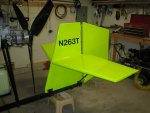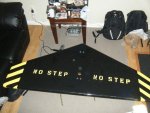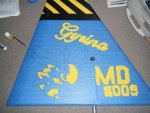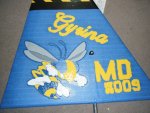robo_nipsy
Active Member
Hi all,
I was hoping someone here could help explain the pros and cons of the different tail configurations to me.
From what I have been reading here, the consensus seems to be that a tall Dominator style tail works very well with a gyrobee.
I understand the surface area / volume thing for the tail feathers, but what I haven't found much info on is anything relating to the vertical position of the HS.
I also understand the reasons for the negative AOA on the horizontal stab (much the same as for F/W) but in what position would this benefit the Bee the most...
On a Dominator, the HS is at the same elevation as the center of the prop.
A Sparrow has a tall tail, but the HS is on the keel
The HS on a Watson / Starbee tail from what I can tell is half way between the keel and the center of the prop.
Monarch has small VS with the HS at centerline...
I'm assuming its effect in clean air vs prop wash is one consideration, but what would be the best for the Bee??
Thanks in advance.
Denis
I was hoping someone here could help explain the pros and cons of the different tail configurations to me.
From what I have been reading here, the consensus seems to be that a tall Dominator style tail works very well with a gyrobee.
I understand the surface area / volume thing for the tail feathers, but what I haven't found much info on is anything relating to the vertical position of the HS.
I also understand the reasons for the negative AOA on the horizontal stab (much the same as for F/W) but in what position would this benefit the Bee the most...
On a Dominator, the HS is at the same elevation as the center of the prop.
A Sparrow has a tall tail, but the HS is on the keel
The HS on a Watson / Starbee tail from what I can tell is half way between the keel and the center of the prop.
Monarch has small VS with the HS at centerline...
I'm assuming its effect in clean air vs prop wash is one consideration, but what would be the best for the Bee??
Thanks in advance.
Denis






